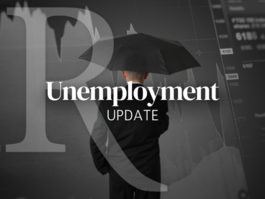McCain Addendum: Are Stay-at-Home Conservatives a Threat to John McCain?
By Alan I. Abramowitz
Several alert readers of last week's Crystal Ball article have contacted me in the past week to question my claim that the greatest threat to Republican unity in 2008 comes from moderates, not conservatives. These readers point out, correctly, that the evidence I cite of greater defections by moderate Republicans in the 2006 midterm elections does not address the question of turnout. Indeed, since this evidence comes from exit poll data, it cannot be used to address the question of turnout. However, there is other evidence that can be brought to bear on the question of whether stay-at-home conservatives pose a serious threat to John McCain in 2008. This evidence comes from the 1992 presidential election when many conservative Republicans were also very unhappy with their party's candidate, President George H.W. Bush, because he had broken his "no new taxes" pledge. It has become an article of faith among conservative commentators that the main reason why the first President Bush lost his bid for reelection in 1992 was that disgruntled conservatives either stayed at home or voted for the independent candidate, H. Ross Perot.
The latest version of this "stay at home conservatives" theory was set forth in the Washington Post's Outlook section last Sunday by long-time conservative activist L. Brent Bozell. According to Bozell, unhappy conservatives cost the first President Bush a second term in the White House in 1992 just as they cost Republicans control of Congress in 2006. And if John McCain doesn't follow the strict conservative line in 2008, Bozell argues that conservatives will again stay at home even if it means throwing the election to Hillary Clinton or Barack Obama.
Bozell's explanation of why George H.W. Bush lost the 1992 presidential election makes for a dramatic story. But there's one problem with it. It isn't true. In order to test the "stay at home conservatives" theory, I used data from the 1992 American National Election Study which surveyed a national sample of eligible voters before and after the election. I compared the rates of turnout and the candidate choices of moderate-to-liberal Republicans with those of conservative Republicans. The results, displayed in the table below, clearly do not support the "stay-at-home conservatives" theory. In 1992, conservative Republicans turned out at a much higher rate than moderate-to-liberal Republicans, 90 percent vs. 76 percent, and they were less likely to defect to either Ross Perot or Bill Clinton than moderate-to-liberal Republicans. The bottom line here is that 69 percent of conservative Republicans went to the polls and voted for President Bush compared with only 44 percent of moderate-to-liberal Republicans.
Figure 1. Turnout and Support for George H.W. Bush among Moderate-to-Liberal and Conservative Republicans in 1992
|
Ideology |
Did Not Vote |
Voted for Clinton |
Voted for Perot |
Voted for Bush |
|
Moderate/Liberal |
24% |
11% |
22% |
44% |
|
Conservative |
10% |
5% |
16% |
69% |
Source: 1992 National Election Study
Contrary to the claims of conservative commentators like L. Brent Bozell, it was low turnout and defections among moderate-to-liberal Republicans that did the most damage to George H.W. Bush in 1992 and it is the threat of low turnout and defections among moderate-to-liberal Republicans that poses the greatest danger to John McCain in 2008.
--
Alan Abramowitz is the Alben W. Barkley Professor of Political Science at Emory University. Alan is the author of Voice of the People: Elections and Voting Behavior in the United States.
COPYRIGHT 2008 CREATORS SYNDICATE, INC.
See Other Political Commentaries
Views expressed in this column are those of the author, not those of Rasmussen Reports.
Rasmussen Reports is a media company specializing in the collection, publication and distribution of public opinion information.
We conduct public opinion polls on a variety of topics to inform our audience on events in the news and other topics of interest. To ensure editorial control and independence, we pay for the polls ourselves and generate revenue through the sale of subscriptions, sponsorships, and advertising. Nightly polling on politics, business and lifestyle topics provides the content to update the Rasmussen Reports web site many times each day. If it's in the news, it's in our polls. Additionally, the data drives a daily update newsletter and various media outlets across the country.
Some information, including the Rasmussen Reports daily Presidential Tracking Poll and commentaries are available for free to the general public. Subscriptions are available for $4.95 a month or 34.95 a year that provide subscribers with exclusive access to more than 20 stories per week on upcoming elections, consumer confidence, and issues that affect us all. For those who are really into the numbers, Platinum Members can review demographic crosstabs and a full history of our data.
To learn more about our methodology, click here.



